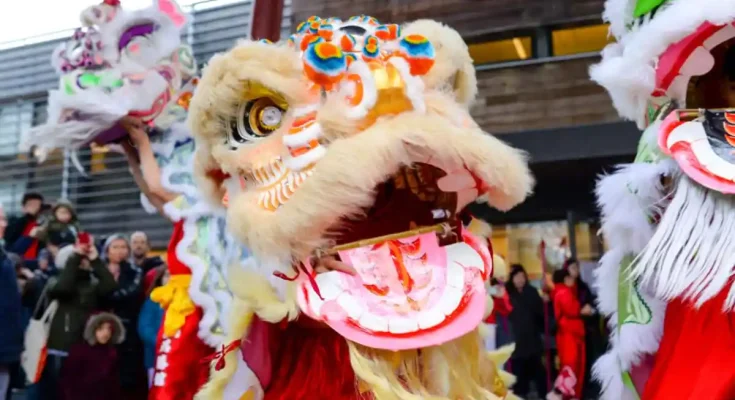Chinese New Year, also known as the Spring Festival, is one of the most significant and ancient festivals in China, with a history spanning over 3,000 years. Its origins are deeply rooted in agrarian society and are intertwined with myths, legends, and cultural traditions.
Origins and Early History
1. Agricultural Roots: The festival’s origins are tied to the lunar calendar, which was used to guide agricultural activities. It marked the end of winter and the beginning of spring, a time for planting and renewal.
2. Mythological Beginnings: According to legend, the festival began as a way to ward off a mythical beast called *Nian* (年), which would terrorize villages at the start of each year. People used firecrackers, red decorations, and loud noises to scare it away, traditions that continue today.
3. Shang Dynasty (1600–1046 BCE): The earliest records of celebrations resembling Chinese New Year date back to the Shang Dynasty, when people held rituals to honor ancestors and deities at the start of the new year.
Evolution Over Time
1. Zhou Dynasty (1046–256 BCE): The term “Nian” (年) was first used to describe the new year, and the festival became more formalized with rituals and sacrifices.
2. Han Dynasty (206 BCE–220 CE): The date of Chinese New Year was fixed to the first day of the first lunar month, and the festival became a national celebration. It was a time for family reunions, feasting, and honoring ancestors.
3. Tang Dynasty (618–907 CE): The festival grew in grandeur, with elaborate celebrations, fireworks, and cultural performances. It became a time for exchanging gifts and well-wishes.
4. Song Dynasty (960–1279 CE): The use of firecrackers and red decorations became widespread, and the festival took on many of the traditions still observed today.
Traditions and Customs
Over the centuries, Chinese New Year developed a rich set of customs, many of which are still practiced:
– Family Reunions: The festival is a time for families to come together, often traveling long distances to celebrate.
– Red Decorations: Red symbolizes good luck and prosperity. Homes are adorned with red lanterns, couplets, and paper cuttings.
– Firecrackers and Lion Dances: These are used to scare away evil spirits and bring good fortune.
– Feasting: Traditional foods like dumplings, fish, and rice cakes are prepared, each with symbolic meanings.
– Giving Red Envelopes (Hongbao): Elders give money in red envelopes to children and unmarried adults as a blessing for the new year.
Modern Celebrations
Today, Chinese New Year is celebrated not only in China but also by Chinese communities worldwide. It is a time of joy, reflection, and hope for the future. The festival lasts for 15 days, culminating in the Lantern Festival, which marks the end of the celebrations.
Cultural Significance
Chinese New Year is more than just a festival; it is a reflection of Chinese culture, values, and history. It emphasizes family, respect for ancestors, and the hope for a prosperous and harmonious future. Despite modernization, the festival remains a vibrant and integral part of Chinese identity.



